- What is Tree Pruning?
- The Definition and Purpose of Tree Pruning
- Benefits of Tree Pruning
- The Importance of Tree Pruning
- 1. Health and Growth
- 2. Appearance and Aesthetics
- 3. Safety and Risk Reduction
- 4. Airflow and Light Penetration
- 5. Fruit Production and Harvest
- Conclusion
- Maintaining Tree Health and Safety
- Regular Inspections
- Pruning for Safety
- Proper Tree Care
- Hiring a Professional
- Preventing Invasive Pests and Diseases
- Understanding Tree Structure and Growth
- Regular Maintenance and Monitoring
- Improving Aesthetic Appeal and Growth
- 1. Shaping the tree
- 2. Removing dead or diseased branches
- 3. Stimulating new growth
- 4. Increasing sunlight and air circulation
- 5. Reducing risk of damage
- When to Prune Trees
- The Best Time to Prune
- Avoid Pruning During the Following Times
- Consult an Arborist
- Seasonal Considerations for Tree Pruning
- Spring
- Summer
- Fall
- Winter
- Factors to Determine Pruning Frequency
- How to Prune Trees
- 1. Determine the pruning objective
- 2. Choose the right time to prune
- 3. Gather the necessary tools
- 4. Start with dead or damaged branches
- 5. Thin out overcrowded branches
- 6. Shape and train the tree
- 7. Clean up properly
- 8. Consider professional help for large or complex pruning
- Question-answer:
- Why is tree pruning important?
- When is the best time to prune trees?
- Can pruning damage a tree?
- Can I prune my trees by myself, or should I hire a professional?
- Video: Ask an Arborist: The ABC’s of Pruning
Pruning is an essential practice in maintaining the health and aesthetics of trees. It involves removing specific branches or parts of a tree to improve its structure, shape, and overall appearance. However, pruning is not a random or haphazard activity but follows specific principles and logic. Understanding these principles is crucial to ensure effective and beneficial pruning for your trees.
One of the key principles of tree pruning is promoting the tree’s natural form and growth pattern. Each tree species has a unique shape and growth habit that should be respected when pruning. Removing branches that disrupt the natural form can result in stress and damage to the tree. By understanding and working with the natural growth pattern, pruning can enhance the tree’s structure and health.
Another important principle is the concept of pruning for a purpose. Pruning should serve a specific goal, such as improving the tree’s health, increasing light penetration, or reducing the risk of branch failure. This purpose-driven approach ensures that pruning is not done unnecessarily or excessively, which can harm the tree. Before pruning, it is essential to identify the specific objectives and plan the pruning strategy accordingly.
Timing is also a critical consideration in tree pruning. Different tree species have different optimal times for pruning, depending on factors such as growth patterns, flowering, and vulnerability to diseases. Pruning at the wrong time can weaken the tree and make it more susceptible to pests and diseases. Understanding the appropriate timing for pruning specific tree species is crucial to ensure optimal results.
Overall, tree pruning is a skilled and intricate procedure that requires a deep understanding of the principles and logic behind it. By respecting the natural form of the tree, pruning with a purpose, and considering the appropriate timing, you can effectively enhance the health and appearance of your trees.
What is Tree Pruning?
Tree pruning refers to the practice of selectively removing certain branches or parts of a tree to improve its structure, health, and appearance. This horticultural practice is commonly performed by arborists or trained professionals who have an understanding of tree biology and growth patterns.
Pruning can be done for various reasons, including:
- Removing dead or diseased branches
- Improving the tree’s overall health and vitality
- Shaping the tree for aesthetic purposes
- Reducing the risk of branches falling and causing damage
- Allowing more sunlight and airflow to reach different parts of the tree
Tree pruning is not a one-size-fits-all approach. Each tree species has its own unique growth habits, and pruning techniques need to be tailored accordingly. It is important to understand the principles and logic behind pruning to ensure that it is done correctly and to the benefit of the tree.
Proper tree pruning involves making strategic cuts at specific points on the tree. These cuts are made with precision to promote proper healing and minimize potential damage. It is crucial to avoid excessive or improper pruning, as it can lead to tree stress, decay, and other issues.
In certain cases, tree pruning may require the use of specialized equipment, such as pruning saws, pole pruners, or even climbing gear for larger trees. It is important to prioritize safety when pruning trees, especially when working at heights or dealing with potentially hazardous branches.
Overall, tree pruning is an essential practice for maintaining the health and appearance of trees. When done properly and with careful consideration of the tree’s biology, pruning can promote healthy growth, reduce risks, and enhance the overall aesthetic value of the tree.
The Definition and Purpose of Tree Pruning
Tree pruning is a process of selectively removing specific parts of a tree, such as branches, limbs, or foliage. It is an essential tree care technique that involves both art and science. Pruning is typically performed for various purposes, including:
- Health and Safety: Pruning helps maintain the overall health and safety of a tree. By removing dead, diseased, or damaged branches, it prevents the spread of diseases and reduces the risk of falling branches, which could pose a danger to people or property.
- Aesthetic Appeal: Pruning improves the appearance of trees by enhancing their shape, structure, and overall beauty. It helps maintain a desirable form and promotes better symmetry.
- Improving Sunlight Penetration: Trimming branches can enable more sunlight to reach the inner parts of the tree and surrounding plants, which is crucial for their growth and vitality.
- Encouraging Fruit Production: Pruning fruit-bearing trees stimulates the growth of new branches and promotes better fruit production. It helps increase the yield and improves the quality of the fruits.
- Managing Size and Density: Regular pruning can control the size and density of trees, preventing them from overgrowing or becoming too dense. This is particularly important for trees planted in urban areas or near structures, as it helps prevent damage caused by branches rubbing against buildings or growing too close to power lines.
- Correcting Structural Issues: Pruning can help correct structural problems in trees, such as weak or crossing branches. By removing or reducing these issues, it promotes better tree stability and longevity.
Overall, tree pruning is a significant aspect of tree maintenance that ensures the health, beauty, and safety of trees. It is crucial to follow proper pruning techniques and principles to avoid causing harm to the tree and to achieve the desired results.
Benefits of Tree Pruning
Tree pruning is an essential maintenance practice that offers numerous benefits to both the trees and the surrounding environment. Here are some key advantages of tree pruning:
- Promotes tree health: Pruning helps remove dead, diseased, or damaged branches, which can prevent the spread of pests and diseases to the rest of the tree. It also improves air circulation and allows more sunlight to reach the inner parts of the tree, promoting overall health and vigor.
- Enhances tree structure: Proper pruning helps shape the tree’s structure, removing weak or crossing branches that can pose a risk of failure. This promotes better branch distribution and optimizes the tree’s growth pattern, leading to a stronger and more attractive tree.
- Increases fruit production: Fruit trees, in particular, benefit from pruning as it encourages the growth of new fruiting wood and improves air circulation around the branches. This results in better fruit quality, increased yields, and easier fruit harvesting.
- Reduces hazards: Regular pruning helps eliminate hazardous branches that may pose a threat to property, vehicles, or pedestrians. It minimizes the risk of falling branches during storms or high winds and prevents branches from interfering with power lines or structures.
- Improves aesthetics: Pruning can enhance the overall appearance of a tree by removing dead or unsightly branches, creating a more visually appealing shape. This is especially important for trees in urban or landscaped areas, where aesthetics play a crucial role.
- Opens up views: Tree pruning can help open up views by selectively removing branches that obstruct the desired sightlines. This can be beneficial for homeowners who want to enjoy scenic vistas or for maintaining clear lines of sight in public spaces.
In conclusion, tree pruning provides a multitude of benefits that encompass tree health, structural integrity, fruit production, safety, aesthetics, and improved views. Regular and appropriate pruning practices are crucial for maintaining the overall well-being and longevity of trees.
The Importance of Tree Pruning
Tree pruning is a vital practice that involves removing specific parts of a tree, such as branches or limbs. It is an essential maintenance activity that offers numerous benefits for both the tree and its surroundings. In fact, regular pruning can help promote the overall health, beauty, and safety of trees.
1. Health and Growth
Pruning helps improve the overall health and growth of trees by removing dead, diseased, or damaged branches. These branches can attract pests and diseases, which can spread and infect other parts of the tree. By removing such branches, tree pruning prevents the further spread of infections, enabling the tree to allocate its resources towards healthy growth and development.
2. Appearance and Aesthetics
Tree pruning plays a crucial role in maintaining a tree’s appearance and enhancing its aesthetics. It helps shape the tree by removing unwanted or unsightly branches, allowing it to grow in a more balanced and symmetrical manner. Additionally, pruning can also improve the overall structure of the tree, making it more visually appealing and pleasing to the eye.
3. Safety and Risk Reduction
Regular tree pruning helps minimize the risk of falling branches, which can pose a significant danger to people and property. Overgrown or weak branches are more susceptible to breakage, especially during storms or high winds. By identifying and removing these hazardous branches, tree pruning ensures the safety of both individuals and structures that may be located nearby.
4. Airflow and Light Penetration
Pruning plays a crucial role in improving airflow and allowing adequate light penetration through the tree’s canopy. By removing dense or overcrowded branches, pruning facilitates better air circulation, reducing the risk of fungal diseases caused by stagnant air. Moreover, increased light penetration promotes the growth of lower branches and plants beneath the tree, enhancing the overall ecosystem and biodiversity of the area.
5. Fruit Production and Harvest
For fruit-bearing trees, pruning is essential to optimize fruit production and harvest. By selectively removing branches, pruning allows more airflow and sunlight to reach the fruit-bearing parts of the tree, resulting in healthier and more abundant fruiting. It also helps manage the size and shape of the tree, making it easier to access and harvest the fruits when the time comes.
Conclusion
Tree pruning is a vital practice that offers numerous benefits, ranging from the health and growth of the tree to safety and aesthetics. Regular pruning helps maintain a tree’s overall health, appearance, and structural integrity while reducing the risk of falling branches. It also promotes better airflow, light penetration, and fruit production, contributing to a healthier and more vibrant ecosystem. Therefore, understanding the importance of tree pruning is essential for any tree owner or arborist to ensure the long-term well-being of trees and their surroundings.
Maintaining Tree Health and Safety
Regular Inspections
Regular inspections are essential for maintaining the health and safety of trees. Inspections should be conducted at least once a year, and more frequently for older or damaged trees. During inspections, look for signs of disease, damage, or structural problems such as cracks or splits in the trunk or branches. Identifying and addressing these issues early on can prevent further damage or accidents.
Pruning for Safety
Pruning is an important practice for maintaining tree safety. Remove dead, damaged, or diseased branches as they can pose a risk of falling. Thin out branches that are crossing or rubbing against each other, as they can lead to weakened attachment points. Keep branches away from buildings, power lines, and other structures to prevent potential damage in case of storms or high winds. Also, consider the height and spread of the tree when pruning to ensure it does not interfere with nearby structures or obstruct visibility.
Proper Tree Care
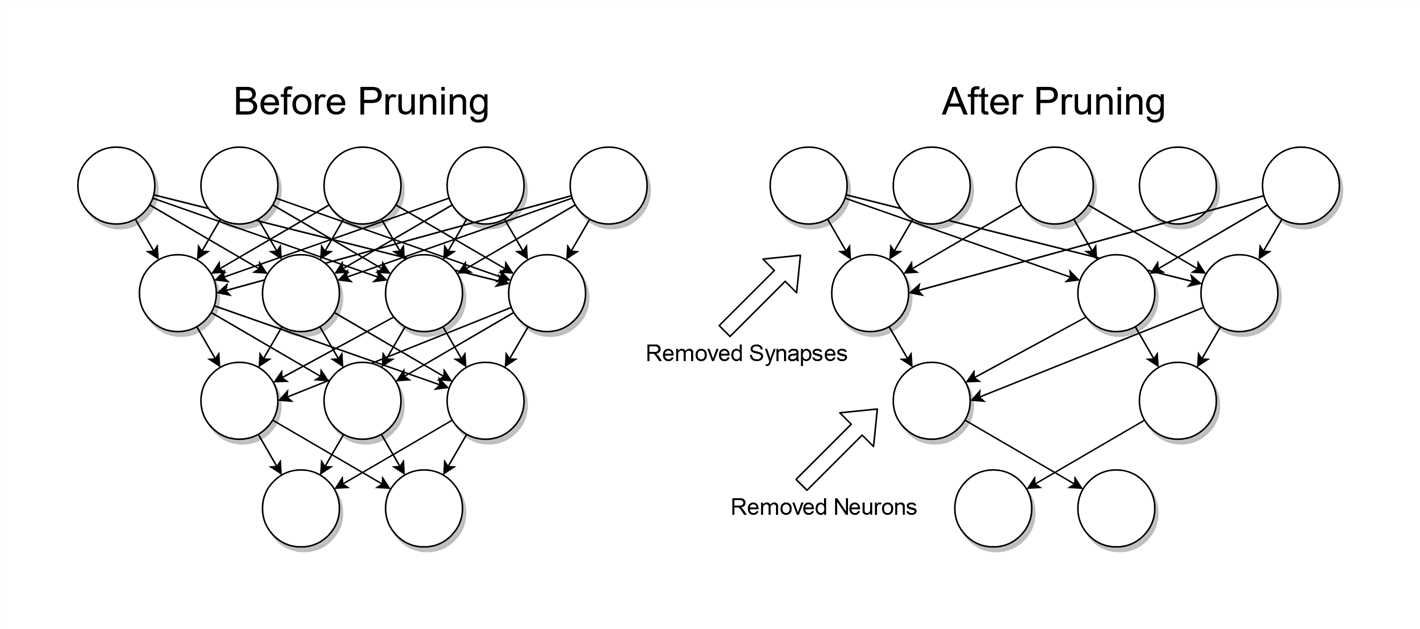
Proper care and maintenance are crucial for the health of trees. This includes regular watering, mulching, and fertilization. Water trees deeply and less frequently to encourage deeper root growth. Apply mulch around the base of the tree to retain moisture and regulate soil temperature. Make sure not to pile mulch against the trunk, as this can lead to rot or create a habitat for pests. Fertilize trees with appropriate nutrients to promote healthy growth and enhance their natural defenses against pests and diseases.
Hiring a Professional
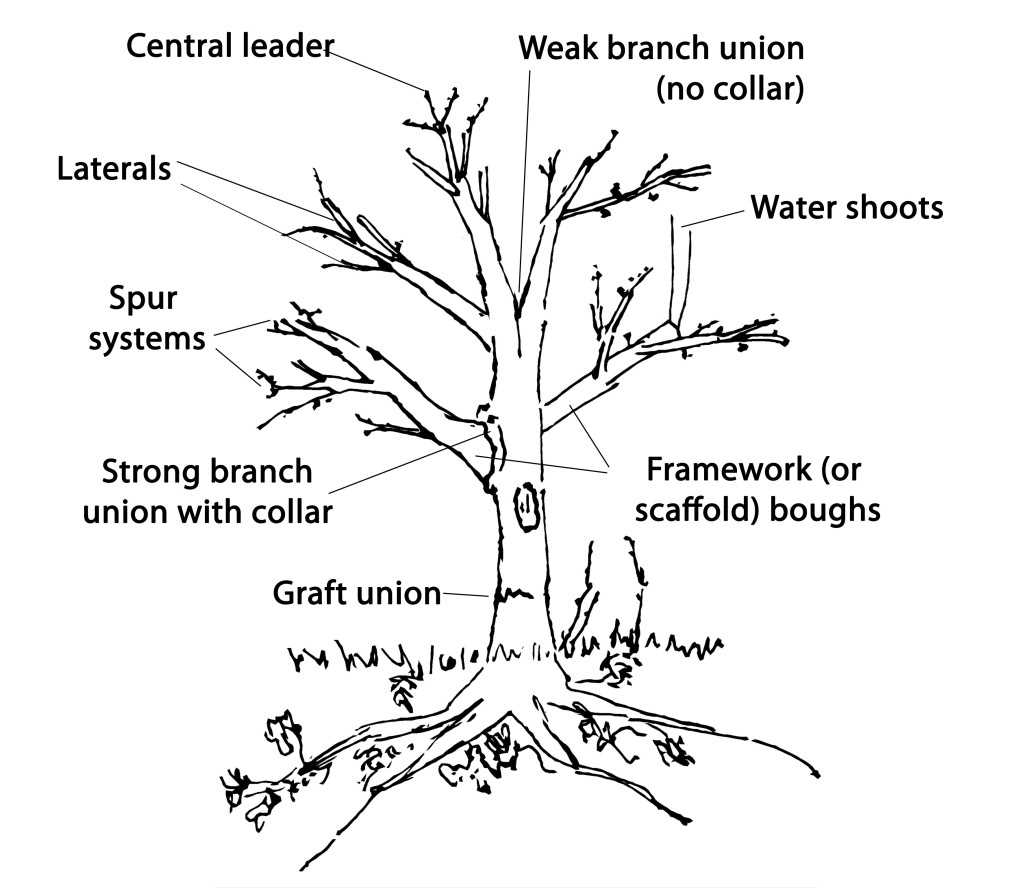
While some tree maintenance tasks can be done by homeowners, certain tasks may require the expertise of a professional arborist. Hiring a professional ensures that the job is done safely and correctly. Professional arborists have the knowledge, experience, and specialized equipment to handle tree pruning, removal, and other necessary tasks. They can also provide recommendations on tree health, planting, and proper care.
Preventing Invasive Pests and Diseases
Trees are susceptible to various pests and diseases that can cause significant damage or even death. Taking preventive measures can help protect trees from these threats. Regularly monitor trees for signs of infestation or disease, such as holes in the trunk, wilting leaves, or discoloration. Implement cultural practices, such as proper pruning and sanitation, to reduce the risk of pests and diseases. If an infestation or disease is detected, consult a professional arborist for appropriate treatment options.
Understanding Tree Structure and Growth
Understanding the structure and growth patterns of trees is essential for their proper care and maintenance. Trees have a natural form and shape that should be preserved when pruning. Avoid excessive pruning that can weaken the tree or disrupt its natural growth. Understand the growth habits of different tree species, including their growth rate, mature size, and vulnerability to certain diseases or pests. This knowledge will help guide the pruning process and ensure the long-term health and safety of the tree.
Regular Maintenance and Monitoring
To maintain tree health and safety, it is important to establish a regular maintenance and monitoring schedule. This includes pruning as needed, inspecting trees for signs of damage or disease, and providing proper care such as watering and fertilization. Regular monitoring allows for early detection of potential issues, making it easier to address them before they become more serious and costly to fix.
Improving Aesthetic Appeal and Growth
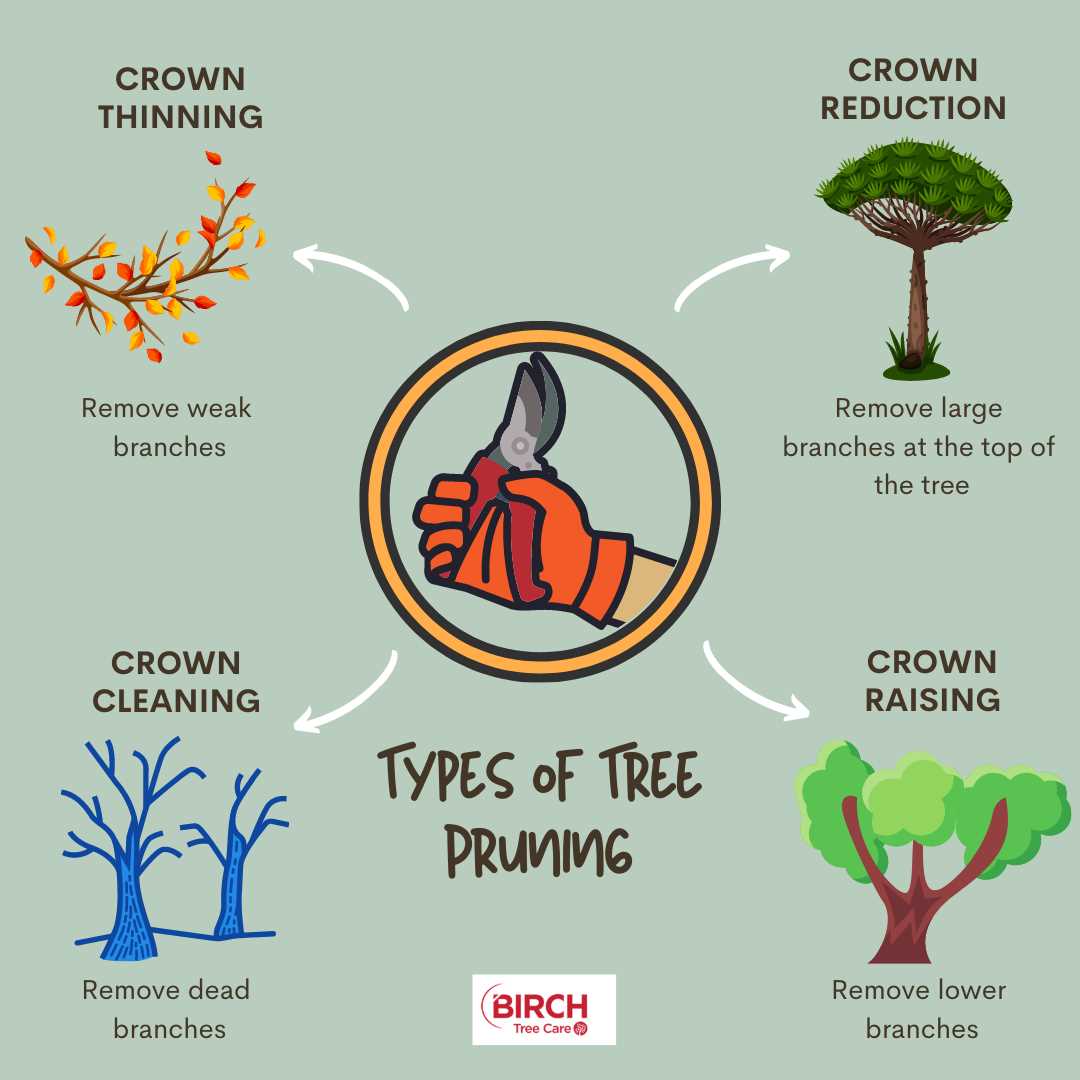
Tree pruning not only improves the overall aesthetic appeal of the tree, but it also promotes healthy growth. By selectively removing certain branches, you can shape the tree to enhance its natural beauty and visual appeal.
1. Shaping the tree
One of the main reasons for pruning a tree is to shape it according to your desired form or style. This can involve removing competing branches, thinning out dense areas, or creating a more symmetrical shape. By carefully pruning the tree, you can enhance its structural integrity and create a more visually appealing appearance.
2. Removing dead or diseased branches
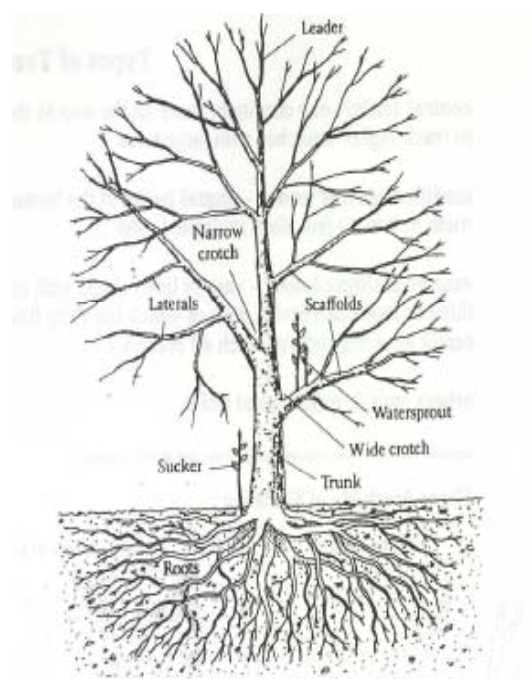
Pruning is crucial for the overall health of a tree. By removing dead or diseased branches, you can prevent the spread of disease and decay to other parts of the tree. This allows the tree to allocate its resources more efficiently, promoting healthy growth and preventing further damage.
3. Stimulating new growth
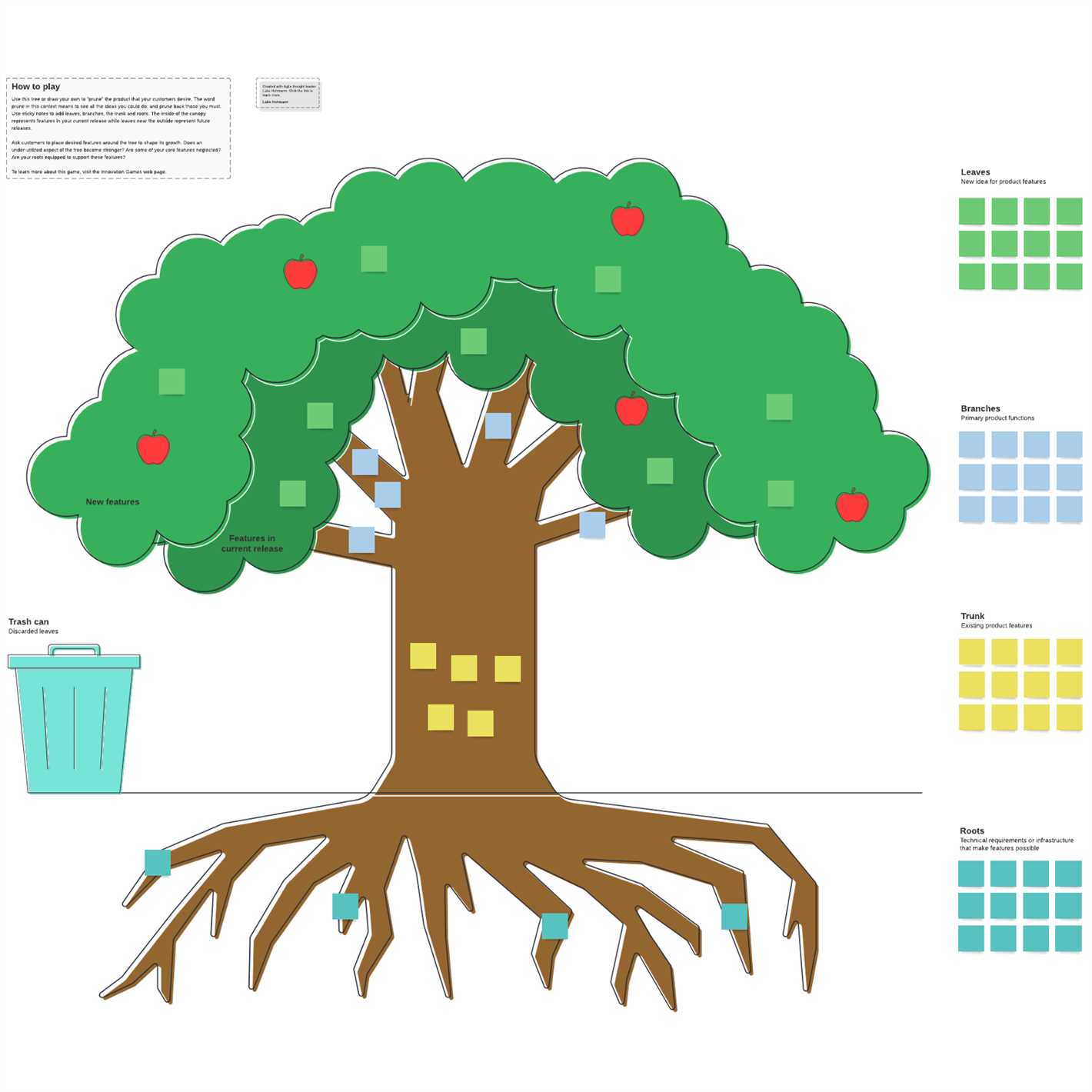
Pruning can also stimulate new growth in a tree. By selectively removing certain branches, you can encourage the growth of new shoots and branches in desired areas. This can be particularly useful when trying to shape a young tree or rejuvenate an older tree that has become overgrown or misshapen.
4. Increasing sunlight and air circulation
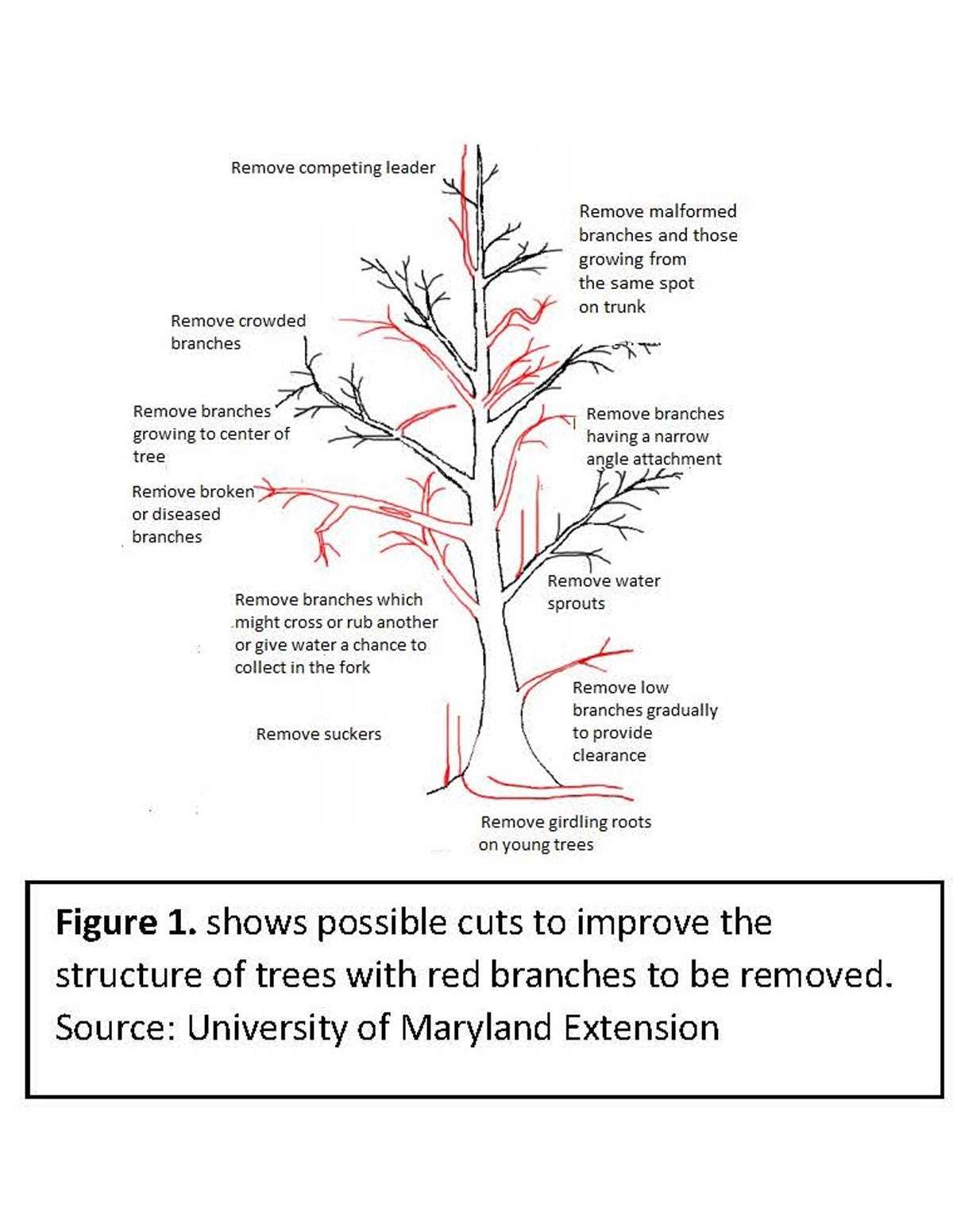
Pruning can also improve the amount of sunlight and air circulation within the tree’s canopy. By removing excess branches or thinning out dense areas, you can allow more light to penetrate the tree’s interior, promoting photosynthesis and overall tree health. Improved air circulation can also help prevent the development of fungal diseases and pests.
5. Reducing risk of damage
Pruning can help reduce the risk of branches breaking or falling, especially during storms or high winds. By removing weak or overextended branches, you can improve the tree’s structural stability and reduce the likelihood of damage to surrounding property or individuals.
In conclusion, tree pruning is a valuable practice that not only enhances the aesthetic appeal of the tree but also promotes healthy growth. By shaping the tree, removing dead or diseased branches, stimulating new growth, increasing sunlight and air circulation, and reducing the risk of damage, you can ensure that your tree remains healthy, beautiful, and safe.
When to Prune Trees
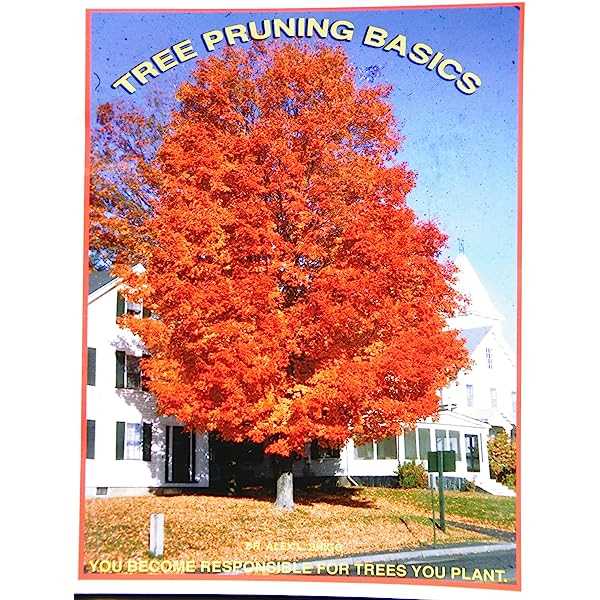
Pruning trees is an essential part of their overall care and maintenance. However, it is important to do it at the right time in order to promote healthy growth and prevent any potential damage to the tree.
The Best Time to Prune
The timing for pruning trees can vary depending on the specific species and the desired outcome. Here are some general guidelines to follow:
- Winter Pruning: Many deciduous trees are best pruned during their dormant season, which is usually in late winter or early spring before new growth begins. Pruning during this time allows the tree to focus its energy on healing the wounds and promotes new growth in the coming season.
- Summer Pruning: Some trees, such as fruit-bearing trees, may benefit from a summer pruning. This can help manage their size and shape, as well as improve air circulation and sunlight penetration through the canopy. However, be cautious not to prune too late in the summer, as it may stimulate new growth that won’t have time to harden off before winter.
- Dead or Damaged Branches: Dead or damaged branches can be pruned at any time of the year. It is important to remove these branches promptly to prevent any potential hazards and to promote overall tree health.
Avoid Pruning During the Following Times
While there are recommended times to prune, there are also certain times when it is best to avoid pruning:
- Spring: Avoid pruning trees in early spring when buds are beginning to break, as this can disrupt the natural growth process and cause stress to the tree.
- During Active Growth: It is generally not recommended to prune trees during their active growth period, as this can hinder their ability to produce energy and can also make them more vulnerable to diseases and pests.
- During Extreme Temperatures: Pruning during extreme cold or hot temperatures can put additional stress on the tree and impede its ability to recover and heal properly. It is best to wait for more moderate weather conditions.
Consult an Arborist
If you are unsure about when to prune your trees or if you have specific concerns or goals in mind, it is always a good idea to consult with a professional arborist. They will have the expertise and knowledge to assess your tree’s needs and recommend the best course of action.
Seasonal Considerations for Tree Pruning
Tree pruning requires careful planning and timing to ensure the health and vitality of the tree. Different seasons bring different considerations for pruning, and understanding these seasonal factors is essential for successful tree care.
Spring
- Spring is an ideal time for pruning because the tree is in its active growth phase, and wounds can heal quickly.
- Remove dead, damaged, or diseased branches to prevent the spread of pests or diseases.
- Prune fruit trees in early spring to encourage healthy fruit production.
Summer
- Prune in summer to control the size and shape of the tree.
- Be cautious of pruning during hot and dry periods, as it can stress the tree.
- Remove excessive growth that can block sunlight and air circulation.
Fall
- Prune in fall to remove dead or weakened branches before winter storms.
- Do not prune late in the season when the tree is preparing for dormancy.
- Trim back any branches that may be hazardous, especially near structures or power lines.
Winter
- Winter is the best time for pruning deciduous trees, as the absence of leaves allows for better visibility.
- Remove any crossing or rubbing branches to prevent damage and encourage healthy growth.
- Prune when the tree is dormant to minimize sap loss.
Note: Proper pruning techniques and tools are essential regardless of the season. Always consult with a certified arborist or tree care professional before undertaking any pruning activities.
Factors to Determine Pruning Frequency
Pruning is an essential maintenance practice for trees. However, the frequency at which pruning should be done depends on several factors. These factors include:
- Tree species: Different tree species have different growth rates and characteristics. Some trees grow faster and require more frequent pruning, while others may grow more slowly and need less frequent pruning.
- Tree age: Younger trees generally require more frequent pruning to help shape their growth and establish a strong structure. As trees mature, pruning frequency can be reduced.
- Tree health: Trees that are stressed, diseased, or damaged may require more frequent pruning to remove dead or diseased branches and promote healthy growth.
- Growth rate: Trees with rapid growth rates may need more frequent pruning to prevent them from becoming overgrown, overcrowded, or structurally weak.
- Location: Trees in urban or suburban areas may need more frequent pruning to manage their growth and prevent interference with utility lines, buildings, or other structures.
- Desired aesthetics: If the tree is being pruned for aesthetic reasons, such as to enhance its shape or improve its appearance, more frequent pruning may be necessary.
The specific pruning needs of a tree can also be influenced by other factors, such as environmental conditions, weather events, and the tree’s overall purpose (e.g., shade, fruit production, ornamental value). It is important to consider these factors and consult with a professional arborist or tree care specialist to determine the appropriate pruning frequency for each individual tree.
How to Prune Trees

1. Determine the pruning objective
Before you start pruning a tree, it’s essential to determine the goal or objective of the pruning. Pruning objectives can include improving the tree’s health, maintaining its shape, removing dead or damaged branches, or creating clearance for utility lines or structures.
2. Choose the right time to prune
The timing of tree pruning can vary depending on the tree species and the pruning objective. In general, it’s best to prune deciduous trees during their dormant season, typically in late winter or early spring. For flowering trees, it’s important to prune right after they finish flowering to avoid cutting off next season’s blooms.
3. Gather the necessary tools
Having the right tools is crucial for effective tree pruning. Some common tools used for tree pruning include pruning shears, loppers, pruning saws, and pole pruners. Make sure your tools are sharp and in good condition to ensure clean cuts and minimize damage to the tree.
4. Start with dead or damaged branches
Begin tree pruning by removing any dead, diseased, or damaged branches. These branches can be a safety hazard and may also hinder the overall health of the tree. Use pruning shears or a pruning saw to carefully remove these branches, making clean cuts just outside the branch collar (the swollen area where the branch meets the trunk).
5. Thin out overcrowded branches
If the tree has branches that are crossing or rubbing against each other, it’s essential to thin them out to encourage better airflow and reduce the risk of disease. Selectively prune branches by cutting them back to their point of origin or where they meet another branch. Avoid removing more than 25% of the tree’s canopy to prevent excessive stress.
6. Shape and train the tree
To maintain or enhance the shape of the tree, you can selectively prune branches to encourage a desirable structure. Remove any branches that are growing in the wrong direction or disrupting the desired shape. When pruning, always cut back to a lateral branch or bud to promote proper healing and growth.
7. Clean up properly
After pruning, be sure to collect and dispose of any debris properly. Rake up fallen branches, leaves, and other pruning remnants. Properly dispose of the debris according to local regulations, such as composting or taking it to a green waste facility. Cleaning up helps prevent the spread of diseases and pests.
8. Consider professional help for large or complex pruning
If you have large or tall trees or if the pruning requires specialized techniques, it’s best to seek professional help. Professional arborists have the knowledge, skills, and equipment to safely and effectively prune trees, ensuring the tree’s health and your safety.
Remember, proper pruning techniques are essential for the tree’s health and longevity. If you’re unsure about pruning a tree or the pruning objective, consult with a professional arborist for guidance.
Question-answer:
Why is tree pruning important?
Tree pruning is important for several reasons. Firstly, it helps to maintain the overall health and vigor of the tree by removing dead, diseased, or damaged branches. Pruning also promotes proper growth and development by shaping the tree in a way that allows for optimal sunlight penetration and air circulation. Additionally, pruning can help prevent accidents by removing hazardous branches that may be at risk of falling. Overall, regular pruning is crucial for the long-term well-being and safety of trees.
When is the best time to prune trees?
The best time to prune trees generally depends on the specific species. However, as a general rule, it is recommended to prune deciduous trees during their dormant season, which is usually in late winter or early spring. Pruning during this time allows the tree to heal more efficiently and minimizes the risk of diseases or pests entering fresh wounds. For evergreen trees, pruning can be done any time of the year, although it is generally recommended to avoid pruning during extreme weather conditions.
Can pruning damage a tree?
If done improperly or excessively, pruning can indeed damage a tree. Over-pruning, also known as “topping,” can remove too much foliage and disrupt the tree’s ability to produce energy through photosynthesis. This can weaken the tree and make it more susceptible to diseases, pests, and environmental stressors. Improper pruning cuts, such as leaving stubs or making cuts too close to the trunk, can also lead to decay and other types of irreversible damage. Therefore, it is crucial to follow proper pruning techniques and guidelines to minimize the risk of damage.
Can I prune my trees by myself, or should I hire a professional?
While minor pruning tasks can often be handled by homeowners, it is generally recommended to hire a professional arborist for more significant pruning work. Arborists are trained in proper pruning techniques and have the necessary equipment and knowledge to assess the tree’s health and structure. They can ensure that the pruning is done safely and in a way that promotes the long-term health and aesthetics of the tree. Additionally, professionals can identify any potential issues or diseases that may require further attention. Hiring a professional arborist is the best way to ensure that your trees are pruned correctly and effectively.







